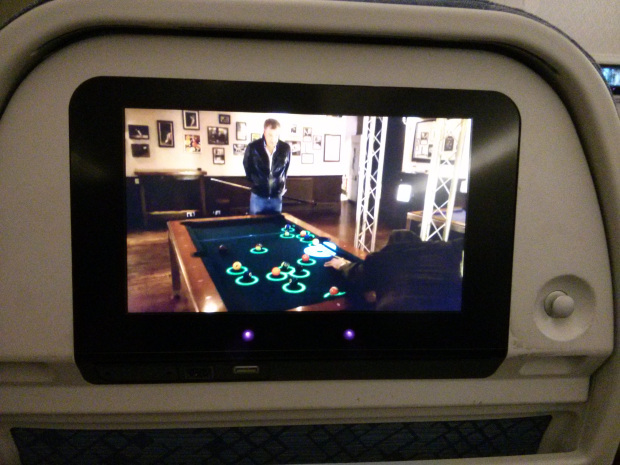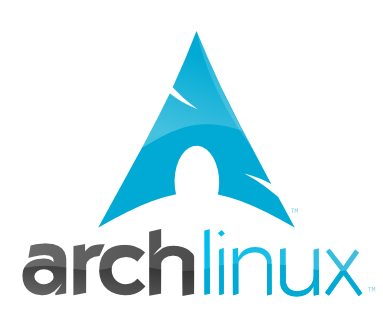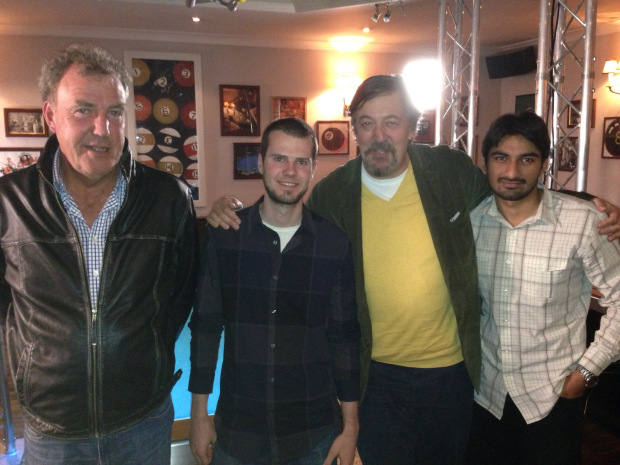
I just got back from taking ARPool to London England (wow what a trip!) to be featured on Stephen Fry’s Gadget Man, a new 6 episode mini series on Channel 4.
We started setting up the system on Thursday with Chris and Alex from North One Television. Things were a bit behind schedule so I’m pretty thankful filming was pushed back to Friday afternoon/evening rather than the morning which would have been very tight. I had to help build the Truss – so much for this being a show up and plug in a computer gig, anyways it wasn’t too big a deal and at least I didn’t have to carry and assemble a pool table like past events. We got the structure up and mounted the camera and projector (I am a wizard with zip-ties!) and fired up the calibration.
Things were not as smooth as I was hoping from my preparations – the table calibration step, the final step that creates the transformation matrices was giving us grief - the final image after the transformation was either rotated 90 degrees or had some really strange jagged distortion. I thought I had fixed this issue but apparently it needs more work – I expect the problem is in the line intersection code possibly a bad solution or an overflow problem. It is really weird because you can perform this step multiple times without altering the code and it can give wildly different results. I think that drawing more intermediate images and data will fix this problem (or at least reveal the bug) especially during the line intersection process.
The week after we got back I added more intermediate debugging visuals which are nice to confirm the calibration is doing what we expect but didn’t solve the issue. I still can’t believe this but one of our sources of grief was Qt being unable to display images with an odd number of rows or columns. That alone makes sense but what still confounds me is how this hasn’t come up before…
Anyways thanks to the randomness of the table calibration procedure it eventually worked for us and we moved on to finish the calibration. We skipped ball training and simply ran the system, surprisingly/luckily the classifier was still able to pick out the cue ball!
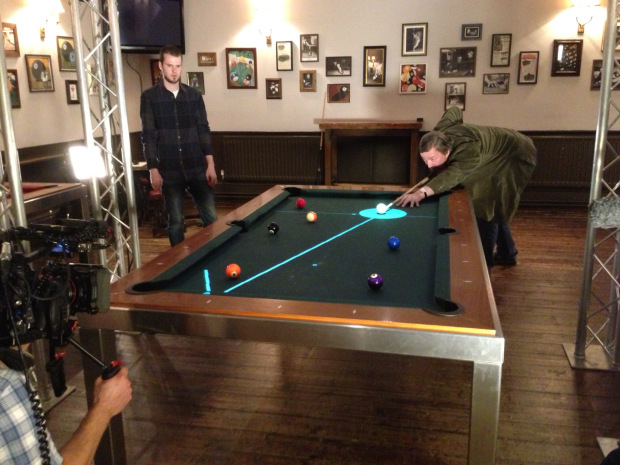
The filming process was very interesting, there were tons of crew members and I could never really figure out who was in charge with the exception of the director. I got to briefly explain to Stephen Fry and Jeremy Clarkson how the system worked and how to use it before they played a game on film. Stephen Fry got to use ARPool while Jeremy was on his own. The shoot went pretty well but after the first shot Stephen Fry sort of forgot how to use it and didn’t have the cue close enough to the cue ball for it to detect the shot. They also both kept bumping into the truss which of course can throw off the whole calibration - wince! After their game we filmed a few sequences of Stephen using ARPool which were set up and I was there to guide him through making the shot. ARPool isn’t quite a hands off demo at this point! We got a few more shots after the celebrities left and everyone was pretty happy with how it went and I am sure that it will look great!
With the filming out of the way I got to spend some time touring around London and visiting some old favorite spots and seeing some new ones. This was the first time I’ve travelled since getting a smartphone which meant I actually took pictures! Check them out here.
* Update *
The episode has aired! I love the little graphic they made up for it 😄
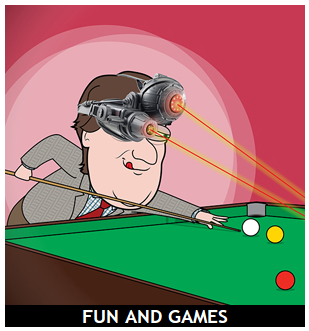
Unfortunately it is not streamable from Channel 4 in Canada so I posted our segment to my youtube:
* Update 2 *
We got some cool coverage in the Kingston Herald.
* Update 3 *
The ARPool episode of Stephen Fry’s Gadget Man was available on my flight!
